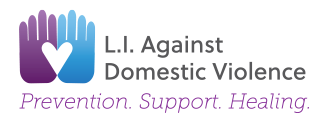
Men and Domestic Violence
Much of the attention related to domestic violence focuses on women as victims, perhaps because women are victims more often than men and because men are less likely to report abuse than women. However, men also are victims, sometimes at the hands of a female partner, and at other times by a parent or same-sex partner. Here are a number of surprising statistics about the frequency of domestic violence against men:
Approximately 1 in 12 men in the U.S. (8.0%) has experienced sexual violence other than rape by an intimate partner in his lifetime. This includes being made to penetrate an intimate partner (2.2%), sexual coercion (4.2%), unwanted sexual contact (2.6%) and non-contact unwanted sexual experiences (2.7%). In the 12 months prior to taking the survey, 2.5% or nearly 2.8 million men experienced sexual violence other than rape by an intimate partner.*
Approximately 1 in 4 men in the U.S. (25.7%) have been slapped, pushed or shoved by an intimate partner in his lifetime, and 4.5% or approximately 5 million men, reported experiencing these behaviors in the 12 months prior to taking the survey.*
Nearly 1 in 7 men in the United States (13.8%) has experienced severe physical violence by an intimate partner in his lifetime. About 9.4% of men have been hit with a fist or something hard by an intimate partner, 4.3% reported being kicked.*
Nearly half of men in the U.S. (48.8%) have experienced psychological aggression by an intimate partner during their lifetime. Approximately one-third (31.9%) experienced some form of expressive aggression and about 4 in 10 (42.5%) experienced coercive control.*
The majority of men (73.1%) who have experienced intimate partner violence said it was by one partner, while 18.6% were victimized by two partners and 8.3% were victimized by three or more partners.*
The most common age when intimate partner violence is first experienced by men is age 18-24 (47.1%), followed by age 25-34 (30.6%), age 11-17 (15.0%), age 35-44 (10.3%) and age 45+ (5.5%).*
Frequent headaches, chronic pain, difficulty sleeping, and poor physical or mental health are roughly twice as common among men with a history of rape or stalking by any perpetrator, or physical violence by an intimate partner, compared to men without a history of these forms of violence.*
Men who are victimized are substantially less likely than women to report their situation to police; only 13.5% of intimate partner assaults are reported to law enforcement.**
*Source: National Intimate Partner and Sexual Violence Survey, 2010 Summary Report. National Center for Injury Prevention and Control, Division of Violence Prevention, Atlanta, GA, and Control of the Centers for Disease Control and Prevention.
**Source: National Institute of Justice and the Centers of Disease Control and Prevention, “Extent, Nature and Consequences of Intimate Partner Violence: Findings from the National Violence Against Women Survey,” (2000).

